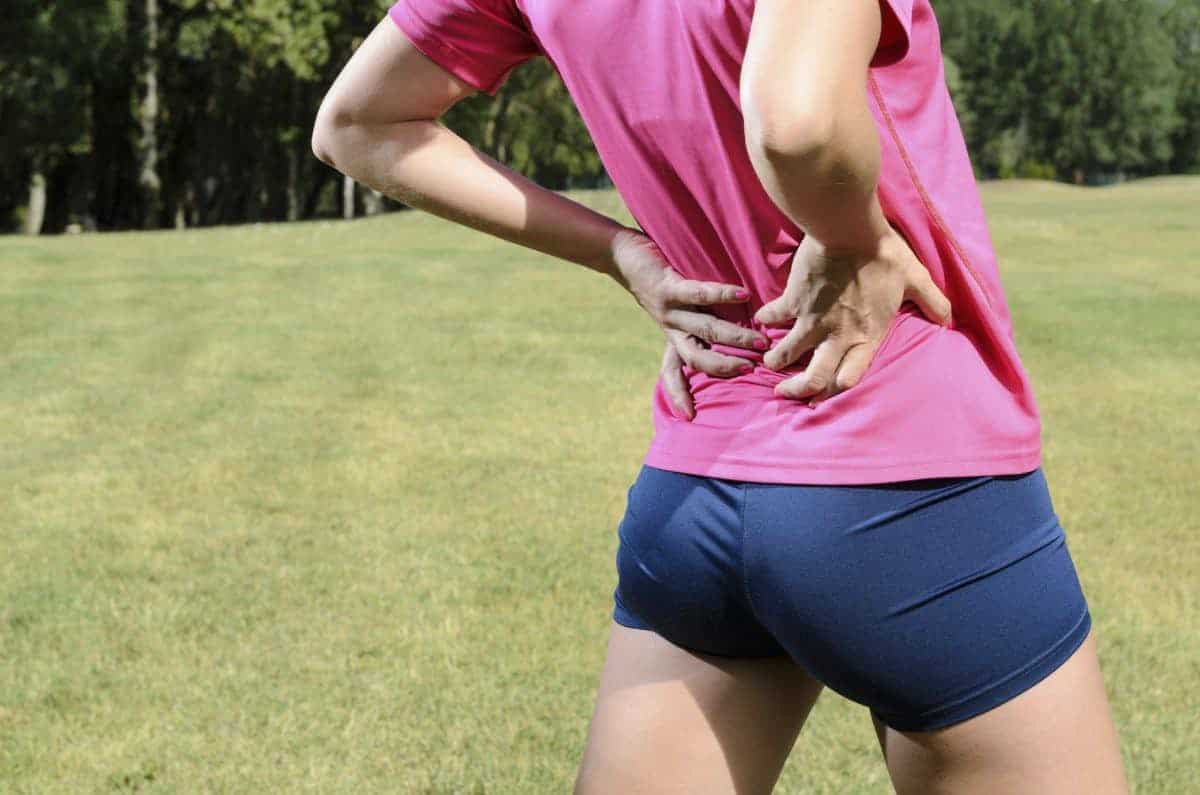How to cope when riding is a pain in the back

Contrary to popular belief, riding isn’t the main cause of back pain – it’s what we do the rest of our day that causes problems.
Beating back pain
Poor posture is most often the culprit and as riding encourages us to sit up well and use our core and postural muscles it can actually be beneficial for low-grade back pain. The movement of the horse also promotes good quality movement in your back hips and pelvis.
If you do suffer from back pain there are a number of things you can do to help both in and out of the saddle. Chartered physiotherapist Clare Howard and sports therapist Kim Hayden offer their advice.
Take a break
Most people who ride have a day job which involves sitting down for up to eight hours a day and it’s this that causes problems. Movement is key because pain is caused when things stiffen up. If you keep moving gently and carefully you can reduce pain.
Make sure you take ‘mini’ and ‘micro’ breaks. A mini break is where you get up and walk around your chair every 20 minutes. A micro breaks should be taken every three minutes and simply involves sitting up straight and shrugging your shoulders.
Warm up cool down
We spend a lot of time money and effort ensuring our horses are in the best health but often neglect ourselves. The rider makes up 50% of the partnership so it’s important to make sure you are warmed up before you get on.
If you can cycle or walk to yard otherwise do something on arrival to warm up you muscles such as walk the dog groom your horse or muck out.
Just as with our horses we also need to cool down. Getting in the car straight after riding and then sitting at your desk all day will cause stiffness and ultimately pain.
If it’s safe to do so take your feet out of your stirrups at the end of a ride or schooling session to relax your legs. It’s also a good idea to walk the last five minutes home or around the school.
Perfect symmetry
We are all asymmetrical by nature as we favour either our left or right hand. This can be another cause of pain as one side is working more than the other.
Learning to do day-to-day tasks evenly on each side will share the workload on both sides of your back and reduce the likelihood of episodic back pain.
This is more difficult that you think so start with easy tasks around the house such as picking up a magazine or the remote control with your non-dominant hand. Then progress so you can do most household activities equally on both sides.
You can also do this at the yard eg when tacking up grooming mucking out poo-picking and using a broom.
Good posture
One of the important things for amateur riders to consider is their position. Having regular lessons will makes sure your technique is good which will reduce stress on the lower back.
Out of the saddle any exercise that is posture orientated will help make you more aware of your body and your position eg Pilates Alexander technique and yoga.
There are numerous rider-related exercise DVDs and books available so find one that suits you.
Stretch it out
Often we are most stiff in the morning due to lack of movement during the night. These simple exercise can be done lying in bed and are designed to gently loosen the lumbar/lower spine.
Exercise 1

Lie on your back bring one knee up to your chest and give it a firm hug. Hold for 20 seconds and do not bounce the knee. Repeat two to three times on each side.
Exercise 2

Still lying on your back bend your knees until your feet are flat on the bed. Slowly let your knees drop down together to one side as far as they can and then the other. Your spine should gently rotate to accommodate this movement but keep your shoulders flat on the bed. Repeat slowly four to five times on each side.
The areas of the body we use most when riding are our lumbar spine hips and pelvis/seat bones. Here are some exercise to help you stretch out before and after you ride.
Hip flexor/iliopsoas stretch

Go down on one knee with the other leg bent in front of you at a 90 degree angle. Keep a good riding alignment of ear shoulder hip knee. Tuck your bottom underneath you and you should feel a stretch down the front of your hip and thigh. Hold for 20 seconds and do not bounce. Repeat two times on each side.
Gluteal/ posterior hip rotator stretch

Stand side on to a solid object about knee height such as a straw bale. Rest your outside foot on the object. Bend your supporting knee while bending forwards from the hips. You should feel a stretch in your outside buttock or thigh. Hold for 20 seconds and do not bounce. Repeat two times on each side.
Gluteal/posterior hip rotator stretch (more challenging)

Stand facing a solid object about mid thigh height. Place a leg on the object as shown in the photo. Bend the supporting leg at the knee to lower your bottom towards the floor. Bend your upper body forwards over the bent leg. You should feel a stretch in your buttock or thigh. Hold for 20 seconds and do not bounce. Repeat two times on each side.
Always check with your doctor/physiotherapist before beginning any new exercise regime. Stop and seek professional advice if any exercise causes pain.
For more advice from Clare and Kim go to www.thebalancedrider.co.uk.






